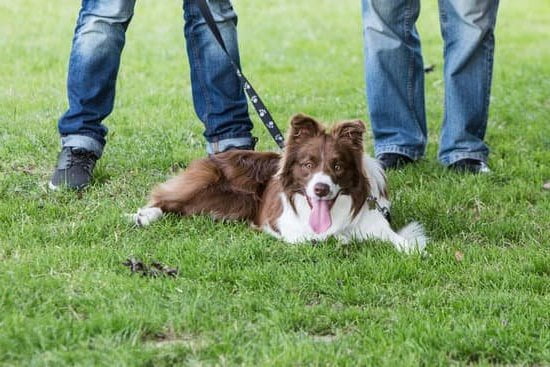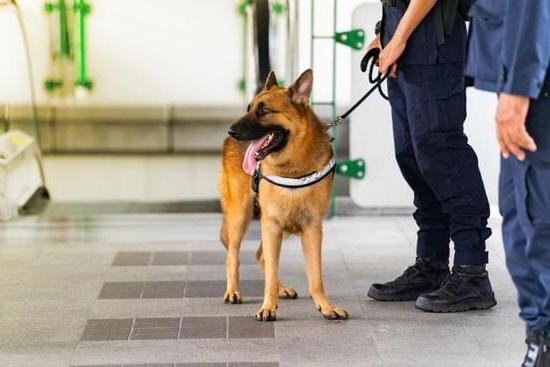Dogs are den animals that like to have a safe, enclosed place to rest and relax. When crate training a dog, you are providing him with just that – a safe place where he can relax and feel secure. The crate should never be used as a form of punishment, but rather as a positive place for your dog to relax in.
There are a few things to keep in mind when crate training your dog. The crate should be big enough for your dog to stand up, turn around, and lie down in comfortably. If the crate is too small, your dog may feel cramped and uncomfortable. It’s also important to make sure that the crate is not too big, as your dog may use one end as his bathroom and the other end as his bedroom.
When you first start crate training your dog, put him in the crate for short periods of time and gradually increase the amount of time he spends in the crate. Make sure to give your dog plenty of positive reinforcement when he stays in the crate and never use the crate as a form of punishment.
A dog crate can be a great tool for crate training your dog and can provide him with a safe, comfortable place to relax in.
Do I Have To Crate Train My Dog
?
The short answer is no, but the long answer is more complicated.
Crate training is a popular way to train dogs, but it’s not the only way. Some people choose to never crate train their dogs, while others find it to be a very effective tool. The decision to crate train or not should be based on what is best for both the dog and the owner.
The benefits of crate training are that it can help housetrain a dog, it can provide a safe place for a dog to rest or sleep, and it can help to prevent destructive behavior. The downside of crate training is that it can be stressful for some dogs, and it can take a bit of time to get the dog used to the crate.
If you are considering crate training your dog, it is important to start slowly and make sure that the dog is comfortable with the crate. You can put a soft blanket or toy in the crate to make it more comfortable, and you can start by leaving the crate open and putting the dog inside for a few minutes at a time. gradually increase the amount of time the dog spends in the crate, and make sure to give the dog plenty of opportunities to relieve himself outside.
If you decide not to crate train your dog, there are other ways to train him. Some people prefer to use positive reinforcement, such as treats or praise, while others use aversive methods, such as yelling or hitting the dog. Whichever method you choose, be consistent and patient in order to achieve the best results.
How To Train Dog To Not Cry In Crate
If you have a dog that cries in its crate, you’re not alone. Many dogs cry in their crates, especially when they are first learning to crate train. Fortunately, there are a few things you can do to help your dog learn to not cry in its crate.
The first step is to make sure that your dog is comfortable in its crate. Some dogs love their crates and will happily go in them on their own, while others need a bit more encouragement. If your dog doesn’t seem to love its crate, start by putting a few treats in the crate and then closing the door. Once your dog is comfortable going into the crate to get the treats, start closing the door for a few seconds at a time. Gradually increase the amount of time the door is closed.
The next step is to teach your dog that the crate is a place of comfort, not punishment. When your dog cries in its crate, do not go to it or give it any attention. This will only reinforce the behavior. Instead, wait until your dog is quiet before you let it out of the crate.
If you follow these steps, your dog will eventually learn that the crate is a place of comfort and will stop crying in it.
Small Dog Training Crate
If you are the proud owner of a small dog, you know that training can be a challenge. One way to make training your small dog easier is to use a small dog training crate.
A small dog training crate is a crate that is specifically designed for small dogs. It is typically smaller in size than a regular dog crate, and it has a low profile so that your small dog can easily stand up and turn around in it.
A small dog training crate is a great way to housebreak your dog. When you first start training your dog, put him in the crate for short periods of time. As he gets used to the crate, gradually increase the amount of time he spends in the crate.
A small dog training crate is also a great way to train your dog to stay off the furniture. When your dog is not in the crate, put him in a room where he is not allowed to be on the furniture. As he gets used to this, he will learn that he is not allowed on the furniture when you are not home.
A small dog training crate is a great way to keep your small dog safe when you are not home. It gives him a place to go to when he is feeling scared or stressed, and it prevents him from getting into trouble when you are not around.
If you are looking for a way to make training your small dog easier, a small dog training crate is a great option.
Crate Training Deaf Dog
There are a few things you need to know about crate training a deaf dog. The first is that deaf dogs are just like any other dogs when it comes to crate training. The key to success is to make sure the dog understands what you want him or her to do and to be consistent with your commands.
The best way to start crate training a deaf dog is to get them used to the idea of being in a crate. You can do this by putting a toy or treat in the crate and closing the door. As your dog gets more comfortable with being in the crate, you can start to close the door for longer periods of time.
Once your dog is comfortable being in the crate, you can start using the crate as a training tool. When you want your dog to go to his or her crate, say the word “crate” and give the dog a treat. As your dog gets better at following your commands, you can start to use the crate as a place to put your dog when you’re not home.
If your deaf dog is having a hard time understanding what you want him or her to do, you can use hand signals to help reinforce your commands. When you want your dog to go to his or her crate, hold up one hand and make a motion like you’re closing a door. As your dog gets better at following your commands, you can start to use more complicated hand signals.

Welcome to the blog! I am a professional dog trainer and have been working with dogs for many years. In this blog, I will be discussing various topics related to dog training, including tips, tricks, and advice. I hope you find this information helpful and informative. Thanks for reading!





